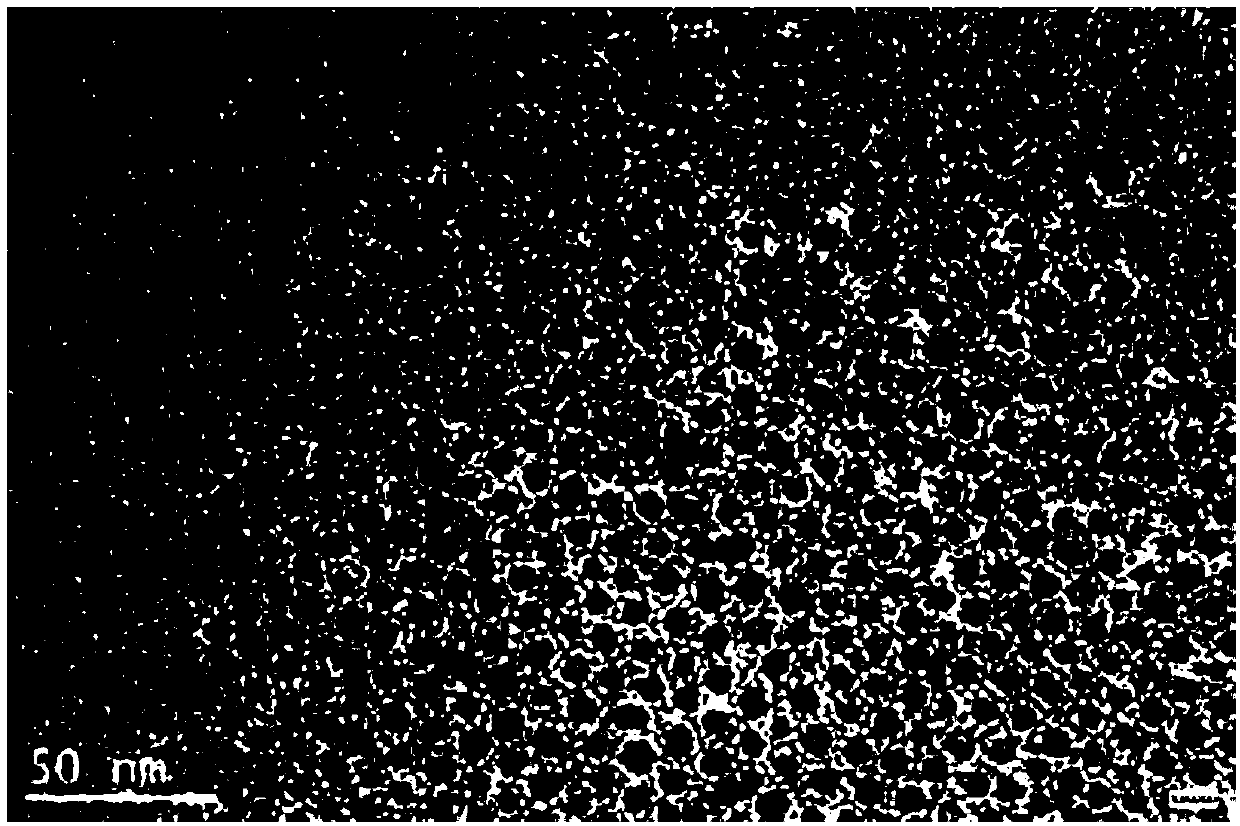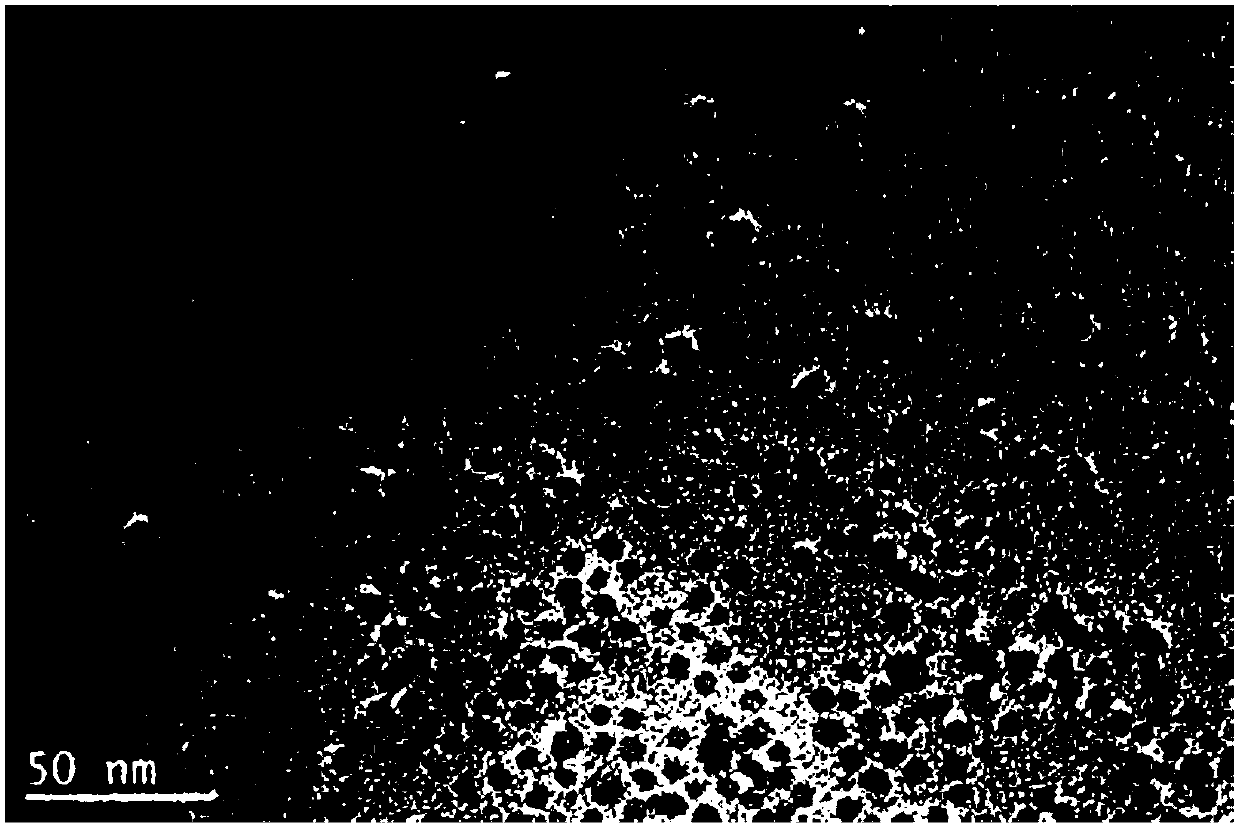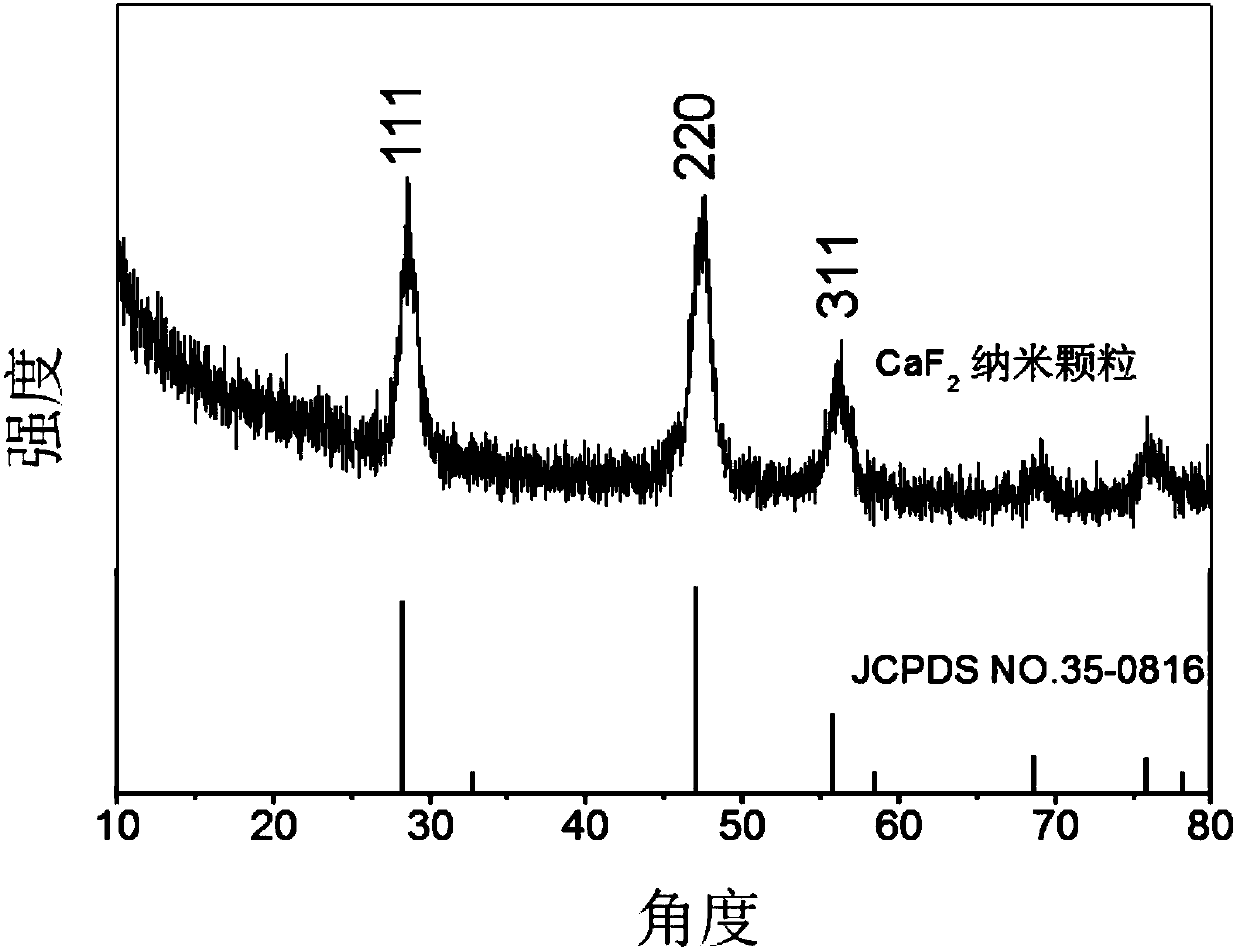Method for producing sub 10-nanometer calcium fluoride core-shell nanocrystal and application thereof in nuclear magnetic resonance
A technology of nanocrystals and calcium fluoride, applied in nuclear magnetic resonance/magnetic resonance imaging contrast agents, nanotechnology, calcium/strontium/barium fluoride, etc. Low relaxation rate and other problems, to achieve the effect of low cytotoxicity, low biocompatibility and good water solubility
- Summary
- Abstract
- Description
- Claims
- Application Information
AI Technical Summary
Problems solved by technology
Method used
Image
Examples
Embodiment 1
[0042] This embodiment prepares water-soluble CaF according to the following steps 2 :Yb / Er@CaF 2 :Gd core-shell nanocrystals:
[0043] a, 0.02g CaO, 0.05g YbCl 3 , 0.005g ErCl 3 Add it into 3mL oleic acid, stir evenly, and then keep it warm at 80°C for 20 minutes to obtain a transparent clear solution A; naturally cool the clear clear solution A to room temperature to obtain a compound of calcium oleate, ytterbium oleate and erbium oleate Precursor;
[0044] b. Mix 0.02g CaO with 0.05g GdCl 3 Add it into 3mL of oleic acid, stir evenly, and then keep it warm at 80°C for 20 minutes to obtain a transparent clear solution B; naturally cool the clear clear solution B to room temperature to obtain calcium oleate and gadolinium oleate precursors;
[0045] c. Dissolve 0.1g NH 4 Add 3.2mL methanol solution of F and 0.05g NaOH to the mixture of 6mL oleic acid and 10mL octadecene, stir evenly, then heat to 50°C and keep it for 0.5h to remove methanol, heat to 240°C under nitrogen ...
Embodiment 2
[0059] This embodiment prepares water-soluble CaF according to the following steps 2 :Yb,Er@CaF 2 :Gd core-shell nanocrystals:
[0060] a. Mix 0.05g CaO, 0.05g Yb(NO 3 ) 3 , 0.006g Er(NO 3 ) 3 Add it into 6mL of oleic acid, stir evenly, and then keep it warm at 150°C for 300 minutes to obtain a transparent clear solution A; naturally cool the clear clear solution A to room temperature to obtain a compound of calcium oleate, ytterbium oleate and erbium oleate Precursor;
[0061] b. Combine 0.05g CaO with 0.05g Gd(NO 3 ) 3 Add it into 6mL of oleic acid, stir evenly, and then keep it warm at 150°C for 300 minutes to obtain a clear clear solution B; naturally cool the clear clear solution B to room temperature to obtain calcium oleate and gadolinium oleate precursors;
[0062] c. Dissolve 0.1g NH 4 F and 0.2g NaOH in 13mL methanol solution were added to the mixture of 6mL oleic acid and 20mL octadecene, stirred evenly, then heated to 100°C and kept for 2h to remove methan...
Embodiment 3
[0073] This embodiment prepares water-soluble CaF according to the following steps 2 :Yb,Er@CaF 2 :Gd core-shell nanocrystals:
[0074] a. Mix 0.03g CaO, 0.05g Yb(NO 3 ) 3 , 0.005g Er(NO 3 ) 3 Add it into 4mL oleic acid, stir evenly, and then keep it warm at 100°C for 60 minutes to obtain a transparent clear solution A; naturally cool the clear clear solution A to room temperature to obtain a compound of calcium oleate, ytterbium oleate and erbium oleate Precursor;
[0075] b. Combine 0.05g CaO with 0.05g Gd(NO 3 ) 3 Add it into 4mL of oleic acid, stir evenly, and then keep it warm at 100°C for 60 minutes to obtain a transparent clear solution B; naturally cool the clear clear solution B to room temperature to obtain calcium oleate and gadolinium oleate precursors;
[0076] c. Dissolve 0.1g NH 4 F and 0.08g NaOH in 8mL methanol solution were added to the mixture of 6mL oleic acid and 10mL octadecene, stirred evenly, then heated to 70°C and kept for 1h to remove methan...
PUM
| Property | Measurement | Unit |
|---|---|---|
| Diameter | aaaaa | aaaaa |
| Particle size | aaaaa | aaaaa |
| Diameter | aaaaa | aaaaa |
Abstract
Description
Claims
Application Information
 Login to View More
Login to View More - R&D
- Intellectual Property
- Life Sciences
- Materials
- Tech Scout
- Unparalleled Data Quality
- Higher Quality Content
- 60% Fewer Hallucinations
Browse by: Latest US Patents, China's latest patents, Technical Efficacy Thesaurus, Application Domain, Technology Topic, Popular Technical Reports.
© 2025 PatSnap. All rights reserved.Legal|Privacy policy|Modern Slavery Act Transparency Statement|Sitemap|About US| Contact US: help@patsnap.com



